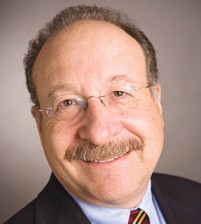Dubroff: Looking for answers in a 300-year-old account of a Plague Year
Nearly 300 years ago, in 1722, a businessman turned journalist named Daniel Defoe recounted the deadly outbreak of bubonic plague that brought London to its knees in 1665.
His book, “A Journal of The Plague Year,” became a bestseller, and over the summer, I re-read the paperback copy I picked up during my junior year abroad at the University of Kent 50 years ago.
Defoe’s book is somewhat fictionalized but it is based on diaries, personal accounts and public records. The plague was devastating — it took the life of one in five residents of London, or as Defoe writes, “a hundred thousand souls.”

From the Editor
The plague of 1665 had some eerie similarities to the COVID-19 pandemic, including the fact that it appeared early in the year, gradually built to a peak and then continued in waves. People were shut up in their houses for most of the year, and if there was an outbreak in the house they were quarantined.
But it is the human reaction to the plague that really caught my eye because so very little has changed. Here are five takeaways from my reading of the book:
• Foreigners always get the blame. In the case of the 1665 plague, it was the Dutch, who were at war with Britain; the French; and also the Turks who were blamed for importing the disease. It appears to have spread first from the Middle East to southern France and then from Europe to Britain. The drive that produced Brexit is nothing new.
• The first response is to fudge the numbers. Defoe recounts how local authorities were extremely eager to suppress the incidents of plague and blame rising death rates on other illnesses — until the outbreak became obvious. Then there became an obsession with the count as the disease spread across the city.
• Those who ignore the disease do so at their peril. Three drunk revelers who mock a plague victim at the height of the epidemic are themselves struck down. As the plague winds down in the fall, people who fled to the countryside rush back to the city and take up old habits, and the disease flares up. No dimmer switch, just more bodies—and a warning not to celebrate too soon.
• Systems will be overwhelmed. Defoe credits the Lord Mayor and civic authorities with keeping civil order and creating an elaborate supply system to keep bakeries open and citizens fed. But as deaths mount up, the city’s burial grounds are filled to capacity. At night, death carts — remember Monty Python’s “bring out your dead”? — pile victims into large pits.
• Fake cures will abound. Defoe recounts the many elixirs and balms that are hawked as sure-fire preventatives, only to claim their creators as victims. Burning charcoal in homes to create smoke was popular. Nobody figured out that plague was carried by fleas that typically fed on rats and then infected humans. Isolation helped but nobody could isolate totally. Does that sound familiar?
Eventually the plague loosened its grip — perhaps because it had killed the most vulnerable, or because an unusually cold winter killed the fleas. But the plague was followed the next year by the Great Fire of London, which killed just a handful of people even though it destroyed or damaged 90 percent of the city’s structures. Something to remember as we enter fire season.
To the people who endured the plague year, the future looked bleak, and it was tempting to think the Dark Ages might return. But Defoe wrote “A Journal of the Plague Year” from the comforts of a rebuilt London whose stone facades would be recognizable today.
Rather than breaking the city, the plague and fire created the foundation for what would become the world’s capital of finance and trade. What will become of us after the coronavirus pandemic is a story we will get to write.
• Henry Dubroff is owner and editor of the Business Times. Contact him at [email protected].










